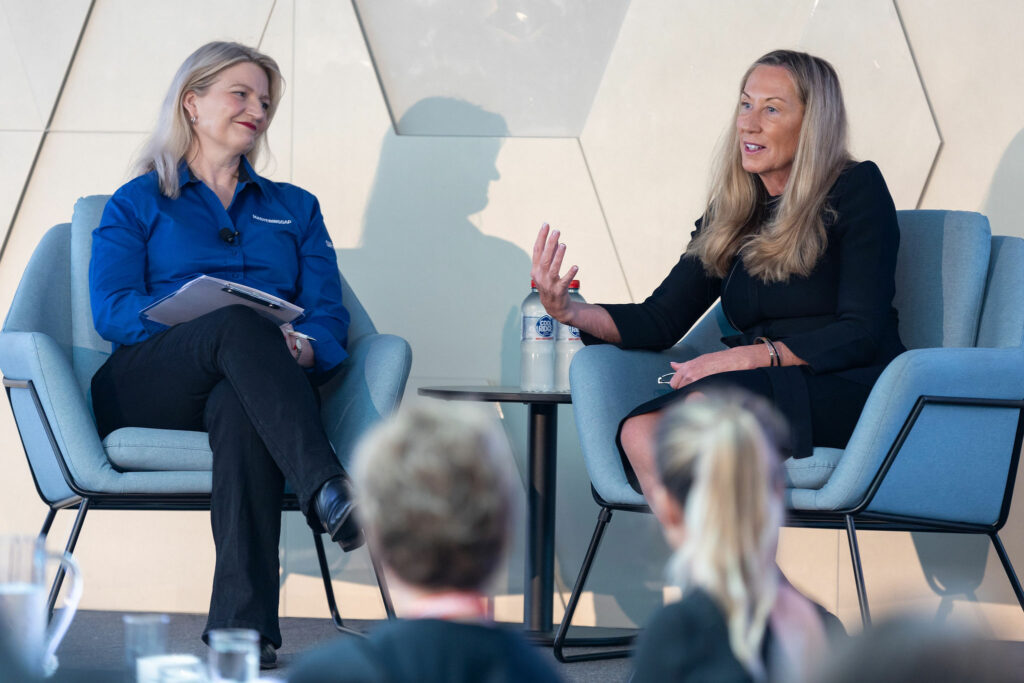“I looked at every obstacle as an opportunity. How can I make myself better because of this injury? Can I be stronger mentally? Is there something that the world is trying to teach me at this moment?”
The recently held virtual event SAP Empowering Women in Supply Chain Network featured Lindsey Vonn, Olympic and World Cup Ski Champion, entrepreneur and philanthropist.
As part of the webinar, Darcy MacClaren, global head of digital supply chain at SAP, interviewed Vonn who shared more about the challenges she has faced in her career, much like the hurdles that often come up against women in the supply chain industry. From negotiating doctor’s appointments after recovering from an injury, to learning German when she was nine years old, Vonn inspired us all with her words of wisdom.
“Ski racing is definitely a male-dominated sport. I learned how to learn from them to help them work with me and not against me no matter how much they underestimated me or thought that I didn’t belong.
“And even when they underestimate you, it can also be a good lesson… I work with the men [in the industry] and they respect me and I think that’s a superpower that I’ve learned over the course of my career. So I’m not ever deterred by lack of diversity, even though I am a champion for it. I think we have to work with what we have and use it to our advantage.”
MacLaren opened up the conversation on mental health, as she asked Vonn to expand on her thoughts and experiences as she has dealt with mental health issues since the age of 18.
Vonn said: “Over the years and since retiring, I definitely have spent a lot more time working on my mental health. It’s a lot about balance and finding your own trigger points that help you maintain that equilibrium. I think there’s never a perfect balance, but you always have to keep trying every day. For me, it was always journaling.
“I think it’s about finding your own way to express yourself and to figure out, okay, what do I need as a person? What makes me tick? I really believe in therapy, I believe in finding your own cues and those are the kind of tricks that work for me.”
Meet the panel

As the webinar got underway, MacLaren introduced the panelists which featured Vonn along with:
Julia Anderson, chief technology and information officer, Campbell Soup Company
Stacy Malueg, head of supply chain, US, Genentech
Rebecca Murray, vice president, cloud technologies, Illumiti
Murray reflected on the similarities highlighted by Vonn that relate to the world of women in supply chain.
She said: “All the biases that she encountered, all the doubters that she had to work her way through and around – I think that’s a direct link to women in supply chain having to work through and around the doubters, about our abilities, misconceptions about what we bring to the table. I think that for me, this was the first direct tie. We [have] faced doubters and had to work for our opportunities and for our mission in that space.”
Anderson was impressed with the conversation around resiliency and sponsorship. She said: “Working in very male-dominated fields, even just having experiences where you walk into a plant and the women’s locker room is a 10-minute walk and upstairs while the men’s is right there – you think that equity is being able to call that out. And I think it resonated with me when she was saying that we all have to advocate and we have to go find male sponsors to advocate for us.”
The role of diversity, equality and inclusion in driving success
MacLaren asked the panelists to discuss how they had seen diversity play into driving success and innovation in their teams.
Malueg said: “In healthcare, complexity is going up. Complexity in our products is increasing, customer expectations are increasing for us as a regulated industry. Diversity is going up in our society and we know we need to address healthcare inequity. With this overall complexity, no one single person can ever have the answer.
“To get the benefit of everyone’s experience and collective brain power, you must have the environment that enables it. And so a really foundational component of DE&I [Diversity, Equality and Inclusion] is having a psychologically safe environment where people feel included, they can be themselves, they can express themselves. They’re comfortable throwing out what may seem like a crazy idea that could be an incredible innovation. DE&I is a really great foundation to create the stage for innovation to happen.”
Anderson discussed an experience at Kraft Foods where she had received an out-of-cycle salary increase whereby she had been paid less than the other people in her role.
She said: “The first thing I do at every job is I get my best HR friend – and all of you can do this. I make sure we have equity across the roles. I’m a data person and being able to get people to an alignment, to a level where they feel compensated appropriately and they feel they can come to the table and they feel that they’re valued – that’s a piece of diversity, inclusion, not just making a diverse team, but ensuring there’s equity.”
Murray added that when more diverse environments are created, it makes space for a broader talent pool, which enables the organization to fill key roles. Creating diverse environments encourages people to stay where they are, helping them to tackle more complex problems, she said.
Could GenAI take to the slopes?
Following on from SAP’s new AI co-pilot Joule, announced in October, MacLaren said that technology will eventually evolve to the point where it could not only support the supply chain but also enhance Vonn’s field, as one example, being able to see how busy ski slopes are at any given time. This prompted Vonn to explore whether there is room for technology evolution on the slopes.
However, Vonn shared that while technology can be helpful, it can’t be relied on as a magical solution to everything: “We’ve had VR capabilities for probably the last five years. I found it to be actually more of a distraction than help. I feel like there’s nothing better than reality… I think there are ways of using technology to your advantage, but I still believe that there’s nothing that’s going to replace the actual skill and talent. You can have all the technology in the world and all the best equipment, but you still have to do the task. That’s something that I don’t think will ever change.”
Looking into the advantages, Anderson said that technological advancements provide everyone with the opportunity to make themselves “tenfold more productive”, enabling the automation of dangerous tasks among other benefits. However, people won’t be left behind:
“I believe very much it’s technology plus humans, computers aren’t going to take us over, robots aren’t going to take our jobs. It has to be a partnership… I think we’re leveling the playing field by having technology, all the technologies, not just the AI, but even the collaboration tools. I think that’s huge.”
Malueg agreed with Anderson on how technology has leveled the playing field. She added that the period of the pandemic and the enforcement of working from home, as a result, saw different talents emerging due to a shift in dynamics.
She suggested that technology can also be used to remove bias from an organization’s “people processes”, whether it’s re-evaluating how the talent acquisition is processed, looking at the data and analytics being applied and how opportunities are shared and managed.
As the webinar drew to a close, MacLaren asked Vonn for some final thoughts.
Vonn said: “I’ve built my network over the course of my skiing career, I’ve met many different people, but I never actually utilized it, I never maintained it. That’s something I wish I had done better but now I’m definitely on a good path and by utilizing that network I also know who I can count on to support me when I need them and who I can’t.”
People want to help, Vonn concluded, encouraging the panel and listeners to be open to asking for help as well as providing it to others. There is no ‘I’ in teamwork after all.




